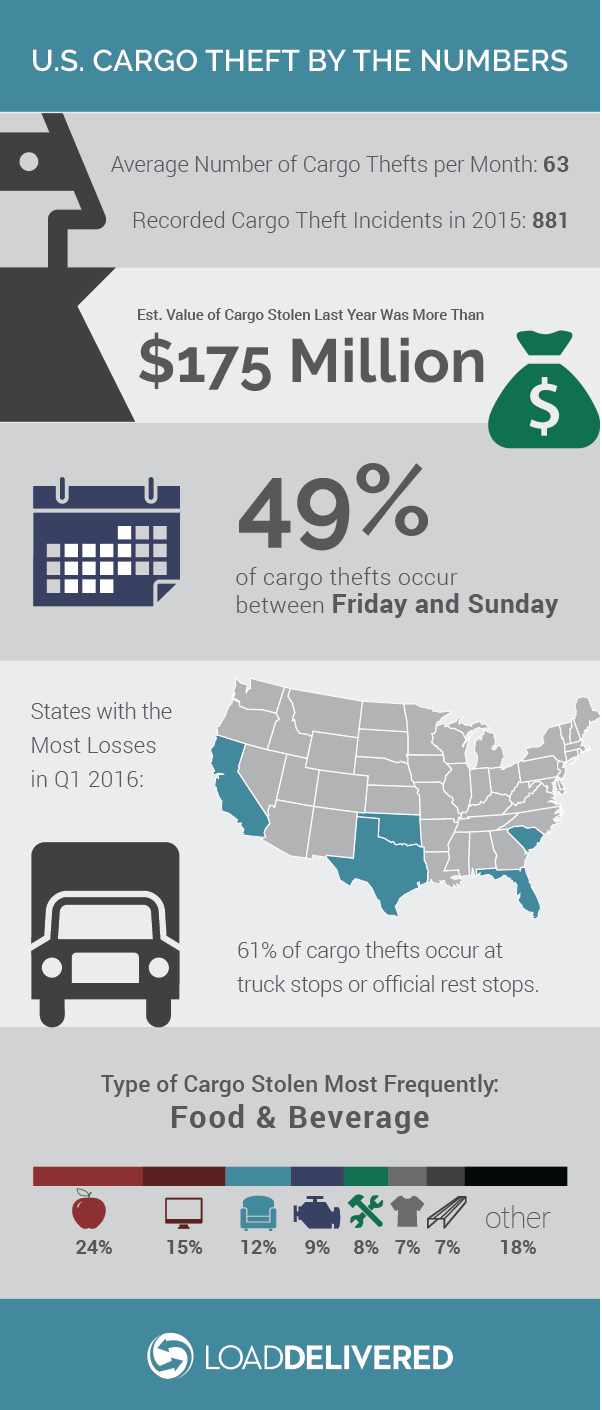Cargo theft has been a problem in the supply chain industry for centuries. Though instances of theft have declined in recent years, the threat remains, and thieves are getting savvier. To help you understand your susceptibility and protect your cargo, we’re sharing the latest statistics, trends, and prevention tips below.
Take a look at this infographic:
Why Are Food and Beverage Products Targeted?
Food and beverage products are highly susceptible to theft for a few reasons. First, they are often harder to trace due to a lack of unique serial numbers. Second, because many of these products are perishable, the “evidence” doesn’t last long. On top of that, many of these products are high value, yet easy to sell—an attractive combination for thieves.
Take tree nuts for example. West Coast drought conditions have created a shortage of nuts in recent years, resulting in high demand and rising value. Nuts are difficult to trace and easy to sell, so they have become a hot target for theft. Losing a load of nuts (or any type of perishable commodity) can be extremely costly to shippers. While many other industries are able to respond by manufacturing more products, nut manufacturers must wait until the next growing season (Fleet Owner).
How Has Cargo Theft Changed?
We’re seeing an increased level of sophistication among cargo thieves. For years, truck stops have been the most likely location for theft. Today, more thieves are focusing on shipper facilities–mapping out the facilities, monitoring arrival and departure times, and studying route patterns (Fleet Owner).
Other new tactics include using fabricated documents, participating in double brokering schemes, and even establishing fake trucking companies. Many theft organizations will separate stolen loads into smaller groups, storing them in different locations rather than in one warehouse. This makes it much harder for shippers to recover products (Fleet Owner).
As the holiday season quickly approaches, take the following precautions to safeguard your supply chain:
- Look for carriers with proven track records and a solid pool of references.
- Ask your third-party logistics providers what protocols they have in place for carrier onboarding and continuous background checks.
- Have a contingency plan in place in case a theft incident does occur.
Preventing cargo theft is a shared responsibility among all parties in the supply chain. Let us know how we can help protect your shipments from future incidents.


